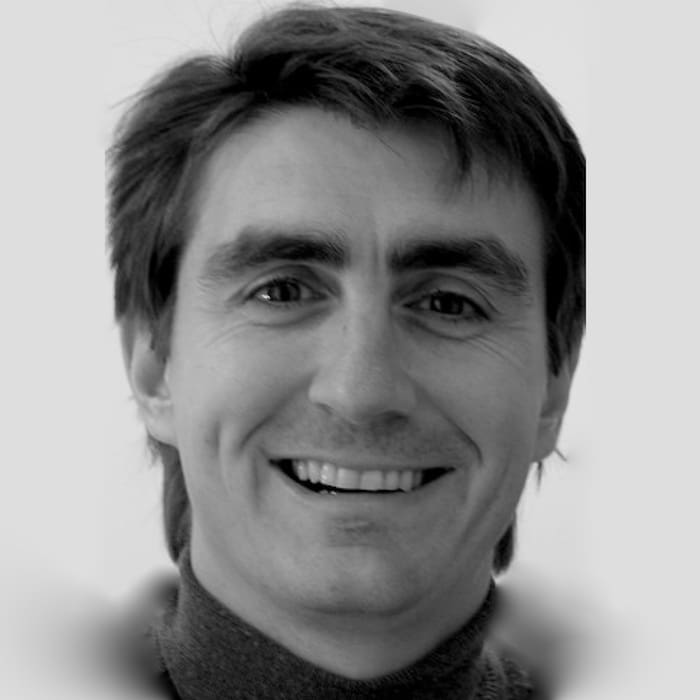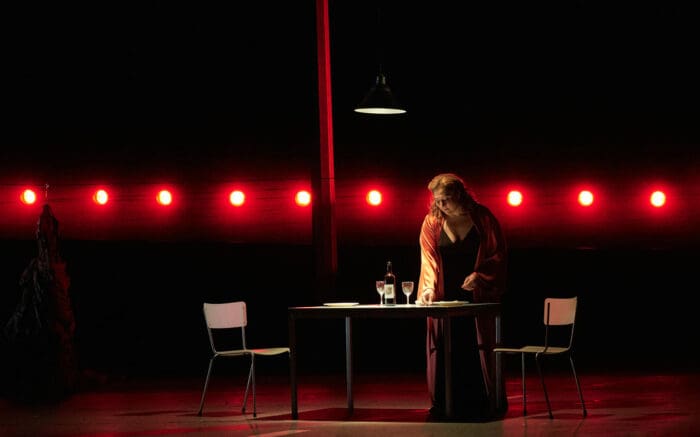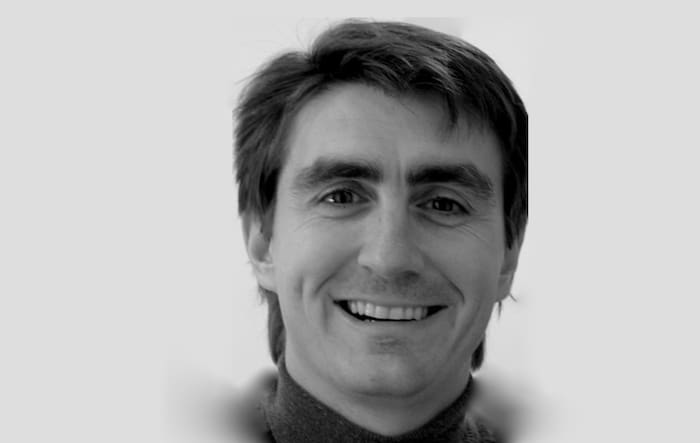 Before we announce the winners of the 2017 MyEntWorld Critics’ Pick Awards, we’re proud to present our annual Nominee Interview Series.
Before we announce the winners of the 2017 MyEntWorld Critics’ Pick Awards, we’re proud to present our annual Nominee Interview Series.
Outstanding Lighting Design nominee David Finn has worked extensively all over the world. He’s especially revered for his work in ballet and opera where he’s lit some of the biggest stages for the grandest stories. For the Canadian Opera Company’s epic Götterdämmerung, he captured the intensity of the piece with a stark, brash, and impactful design that helped bring Wagner’s Ring Cycle to its triumphant conclusion
Do you remember your first experience with theatre? How did you get into lighting design?
My parents were both from the theater. They worked together at the Guthrie Theater in Minneapolis. My father became a college professor who taught acting and directing. Moving to Michigan in the early 70’s, he started a summer theater with his best friend called the Hope Summer Repertory Theater in Holland. So starting in 1973, when I was 11, I worked every summer with the stage crews. My father gave me the credit of “Grip” and gave me $25. He promised to double the salary every summer not thinking that I would work there until I left for college. Ultimately, I came back as a Lighting Designer in the summer of my freshman year of college to light A Midsummer Night’s Dream directed by John Tammi, the friend whom with my father started the theater. I worked with a great many artists at this theater and would spend countless hours hanging about there… watching the designers, directors and actors work.
What’s the most important thing about lighting design that people take for granted?
It really depends upon whom you are speaking of when you ask this question but I would guess that PROCESS is the thing that most people would take for granted. I am always surprised by how many folks do not understand the process that is so important to fully realizing a cohesive work onstage. When I describe it to people they are amazed at how much goes into what they simply see as beautiful pictures onstage.
Walk us through the process- where do you start with a lighting design project?
My process starts with research – reading the script, listening to music, looking for inspiration, studying the period, dreaming of the quality of light, natural light vs. artificial light, etc… These are the elements you bring to the first meeting with the director. Then I dive deeper into the structure of the piece – script motivation or intuitive motivation from story, structure or music, time of day, when to be naturalistic vs. expressionistic, style, effects, etc… depending upon the medium – a script, a libretto, music, etc.. And then in dance there is story vs. abstract work where I feel that in the abstract work it is essential to find a structure or story that makes sense to you at the very least. After all of that and many meetings with the creative team, you move into planning and specifying – plans, sections, studies of lighting coverage, angle, color, quality of light – hard or soft etc… Does the piece require low angle light? – re footlight or shinbusters, or does it require daylight quality blasts of brilliant light? – re: HMI sources like Fresnels.
Ultimately, you need to translate all of the research and motivation for structure into a plan of specific lighting fixtures with a location and color and division of control. Once this is complete you negotiate this plan with the theater or producer over budget, fixture availability, time in the theater, etc… Typically, all of the above happens anywhere from 1 to 3 years out from the opening of the project. Once in the theater, you work to the schedule that has been set. The crew hangs the light plot, the fixtures are focused and all of the fixtures attributes – color, size, softness, etc. are set. And then you begin to create the structure of the piece from your kit of parts, making a series of light “cues” that sequence with the piece onstage. Sometimes this is done in deep collaboration with a director and/or designer and sometimes you take it on yourself – all depending on your co-artists.
The in-house process can take on many shapes and styles depending upon the amount of time you have to work solely on the lighting, to light over rehearsals and how complicated the other design elements of the piece may be.
You do a lot of design for operas and ballets. How does the medium affect how you approach a project?
Music: The one element that really makes these mediums cohesive. So much of the motivation of the light, the timing, the feel, the intuitive quality behind what you see onstage is derived from the music.
You’re pretty prolific. Do you ever find yourself burning out or grasping for new ideas?
This goes in phases. There are always times where you struggle and then when you find that it just flows out of you. A lot has to do with the atmosphere surrounding the project, the team, the crews, etc…
What have been some of your favourite projects to date?
I love the projects that are challenging. This [Wagner Ring Cycle] was a great force in my creative life. I have gone on to do so many projects with the designer and directors – all of whom I love working with. I also have a deep affection for Sasha Waltz in Berlin and her work, specifically the Romeo et Juliette we produced for the Paris Opera. It is collaborative, which is an element of the work that inspires any artist.
How much guidance or input do you get from the directors of the production?
Some directors/choreographers/designers want to be involved in every step of the process, and others are completely hands off and only chime in when they see a detail they want changed. It truly depends upon the person.
How did you get involved with the Canadian Opera Company?
I first lit Venus & Adonis for the company in the early 90’s. My mentor, Jennifer Tipton originally lit the piece elsewhere and when it transferred to Toronto none of the original team could make it so an assistant director reworked the piece and I relit it. Tim Albery came to see that production and I ended up working with him on various other projects over the years. I am unsure of how this might have influenced them calling me up for the Ring but I had not worked with Michael Levine before and I came up to meet him in the early design phase and we just hit it off.

Tell us about your design for Götterdämmerung and what you were going for with that landscape.
The work is highly defined by Michael’s landscapes and interiors – contemporary, cold, making the banal beautiful. There are some design connections to the previous operas and the color palette had a strong thru-line in all of the pieces. Set in a somewhat abstracted realistic setting, the lighting had to take on the same feel… the lonely road at night, the contemporary office and board room, abstract use of fluorescent lights and lighting, a cold and striking quality, the floating bed or kitchen table in an open landscape. We used the fluorescents in a wall at the back and also a row of PARS (like headlights) in red to help establish mood and location and abstract the atmosphere a bit more.
What were some of the practical demands of the production that you had to accommodate?
Well originally it had to adhere to a plot that could be used for all four productions as we presented them all together in 2006. Once the piece was on its own, we did not really see the reason to change it too much as it also had to rep with another COC production.
Did you have any big ideas that were edited out for practical reasons?
There are always big ideas that are edited out, but usually in the budget phase so they never really are seen on the stage. I don’t think that there was any one large item that I wanted for this piece that I couldn’t have. I most likely cut some of the more expensive lamps that needed to be rented in order to adhere to the budget we had at the time.
Were you pleased with how the design worked in practice?
Yes
Do you have a favourite moment in the production?
I love the roadway at the beginning with the 3 norns weaving the electrical cables that connect to the cables hanging overhead. It is ghostly yet a very specific image with a touch of wry humor as we have the flashing red streetlight upstage.
What are you doing now/ what’s your next project?
I have just finished Tosca at the Met. I am designing set and lights for a full length ballet of The Crucible in Scotland. I am also working on a full length ballet of The Queen of Spades for The Royal Danish Ballet and a new Swan Lake for the Royal Ballet in London. I have a new Cirque du Soleil project in the works and am preparing The Flying Dutchman for the Met.

